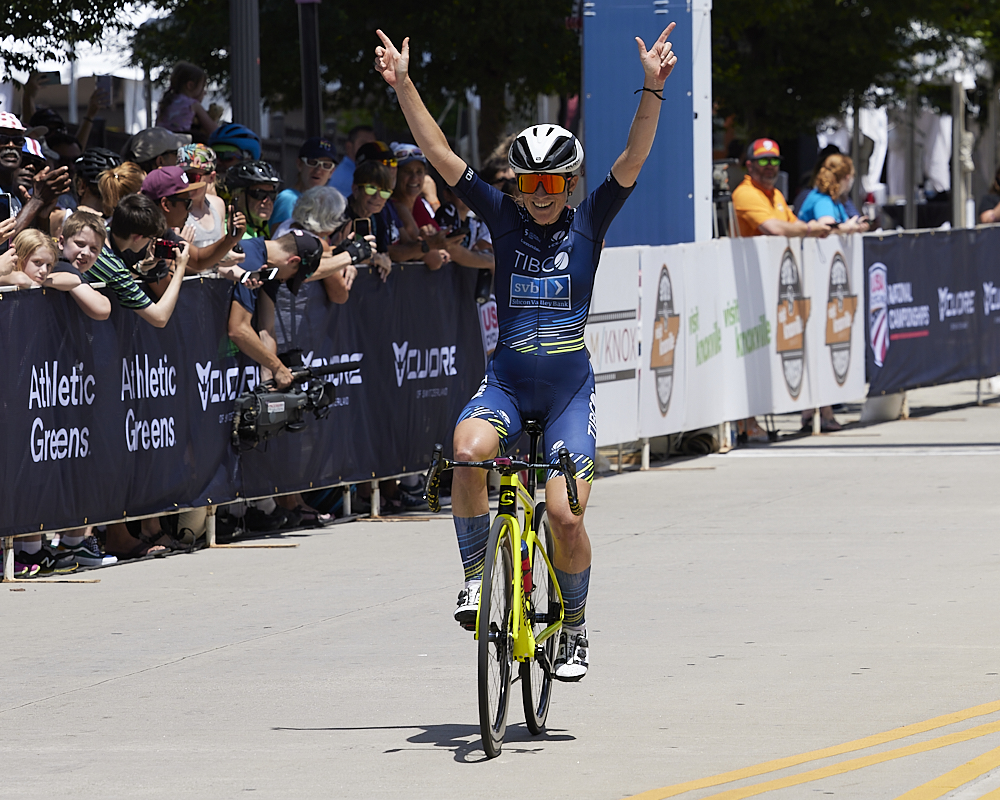Overtraining Syndrome: How to spot the signs
Learn how to recognise the signs of overtraining and prevent it from happening in the first place

Overtraining is when an athlete experiences a period of high training load and inadequate rest which results in a decrease in performance. The signs and symptoms of overtraining are numerous, and we will delve deeper into those later in this article. But first, let’s differentiate overtraining and progressive overload.
Progressive overload is a classic training principle that says, in order to improve, an athlete must gradually increase the amount of stress (training load) they are putting on their body. This means putting ever-increasing loads on your body to in order to keep improving. If you stop pushing your limits, you will plateau, the principle says.
Overtraining and progressive overload are mainly differentiated by the rest periods associated with them. In overtraining, the athlete is getting inadequate rest, as a result, their body begins to break down, and their performance decreases. In progressive overload, on the other hand, the athlete builds structured rest periods into their training calendar so that they can continue to push their body while also getting stronger.
It’s a complicated balancing act, training and rest, when it comes to cycling. There is the old belief – or should I say myth – that the more you train, the faster you get. This is barely true, if at all, because there are so many other physiological and psychological factors that influence your cycling performance. In this article, we’re going to look at the signs and symptoms of overtraining syndrome, how to recognize it, and how to avoid it altogether.

Signs and symptoms
There are many symptoms of overtraining, some of which can be measured, and some of which cannot. We’ll start with the easy-to-see ones.
Increased resting heart rate can be a sign of overtraining, as well as changes in heart rate variability (HRV), increased levels of cortisol, and decreased levels of testosterone and muscle glycogen levels. Poor sleep and weight loss – especially muscle loss – are two of the most concerning and impactful symptoms of overtraining.
It is important to distinguish that overtraining develops over a long period of time; it is not something that pops up overnight. The changes described above should be measured over a period of at least two weeks before making any assumptions about overtraining. Just because you did a big ride over the weekend and are feeling tired on Monday doesn’t necessarily mean that you are overtrained.
The latest race content, interviews, features, reviews and expert buying guides, direct to your inbox!
In addition to the scientific metrics laid out above, there are a number of other signs of overtraining that are not so easy to spot. These can include irritability, mood swings, demotivation, anxiety, depression, chronic fatigue, and performance plateau.
Causes of overtraining
There are a few different ways to avoid overtraining, depending on which angle you tackle it from. Simply put, overtraining is not just over-training, it is also under-resting. It’s right there in the definition.
In fact, inadequate rest is much more likely to cause overtraining than training too much. Most cyclists – those of us with jobs, families, and other responsibilities – simply don’t have time to train too much. The most we can fit in is six, 10, or maybe even 15 hours a week. It’s tough to overtrain if you’re only riding an hour or two per day - unless you’re riding hard every day - but it's definitely possible to under-rest in the hours off the bike.
It is possible to overtrain in terms of volume and or intensity. Your weekly training hours alone won’t tell you if you’re overtraining, and neither will a single interval session. But by looking through your training calendar, you will be able to spot a few trends.
Back-to-back-to-back high-intensity rides are a recipe for disaster. Just as you need to build rest days into your weekly training plan, you also need to include recovery and endurance rides. These are low-intensity rides in Zone 1 and Zone 2 that will only stress your body’s aerobic system, and they are much easier to recover from than high-intensity interval rides.

How to avoid overtraining
To prevent overtraining, you should follow a consistent and repeatable structure with your training and recovery. Here is a basic weekly training structure to help you avoid overtraining:
- Include at least two rest days/recovery rides per week
- Target two or three (max) days of high-intensity interval training (HIIT) or racing per week
- The rest of your rides should be in Zone 1 or Zone 2 (using a five-zone model)
- “Rest” every fourth week using a reduction in training volume, intensity, or both
Many coaches follow the periodisation training philosophy of three weeks on / one week off, which most closely relates to weekly training volume, but can also be associated with weekly workloads or training intensity. Using this model of periodisation – which says that training should change over time and include rest periods – the coach prescribes a “rest week” every fourth week on the calendar, wherein the athlete’s training volume is decreased by about 30-50 per cent.
A cyclist who trains an average of 10 hours/week, for example, would ride around six hours on their rest week to promote recovery and training adaptations. This 3:1 schedule is designed to be as sustainable as it is effective, and prevent overtraining while simultaneously increasing fitness. Wahoo Fitness' Ian Boswell told us, “Make sure to reward yourself. Take it easy on your rest week. Have a beer or a glass of wine… The last thing you want before a major goal race is to be burnt out, injured, or unmotivated.”
Remember that not all stress comes from the same source; and in this case, stress doesn’t just come from cycling. Overtraining can be caused by many stress factors related to training, travelling, work, family, and more. I’ve seen many athletes become overtrained during a stressful inflection point in life, such as a cross-country move, job change, family stress, or relationship issues. Just because you’re doing the same amount of training that you always have doesn’t mean that you’re immune to overtraining.
“Overtraining is both physical and mental”, said Boswell. “There are times when you need to push hard to improve – equally, you have to realize that there are days when you’re not going to gain anything by doing this workout at 50 per cent.”
That’s why it’s important to monitor not only your physical metrics such as resting heart rate, HRV, illness, and weight or muscle loss, but to also pay attention to your energy levels, sleep quality, and daily mood. If something is awry for more than a week, it’s time to take a step back and see if you are overtraining.
If you’re still unsure, talk to a coach to get an outside perspective. It is incredibly helpful to have someone separated from the emotion of your life who can take an objective look at your metrics to see if you’re overtraining. Coach Neal Henderson of Wahoo says, “Don’t get stuck looking at a tree when you could be looking at the forest.” In other words, take a step back and look at the bigger picture.

Recovering from overtraining
Not all plans are perfect, and if you are a training endurance athlete, there's a chance you'll experience overtraining at some point in your life. But it’s not the end of the world, and it is easier to recover from overtraining the sooner you identify it.
There are three main facets of recovery from overtraining: reduction of training load, physical and mental rejuvenation, and a careful return to training.
The first step is to decrease your training load or take a complete break from cycling. Don’t worry about your fitness, because that will quickly come back. But if you keep pushing when you’re in a state of overtraining, you could reach the point of burnout and never want to ride a bike again. A temporary loss of fitness is worth saving your relationship with cycling.
The longer you have been overtraining, the longer you will need to recover. Some athletes may need only a week or two of rest to recover, while others may need several months. The process can seem daunting, but it’s not as bad as you think. In fact, as you return to training – likely with less volume and or intensity than before – you will have time for everything else in life. See recovery not as a loss of cycling, but as a gain of time for family, friends, hobbies, leisure, sleep, and self-care.
During the recovery period, keep track of your metrics to see if they are returning towards your baseline. Above all, listen to your body and pay attention to how you feel when you get out of bed in the morning and your energy levels throughout the day. If you’re still feeling slow and sluggish after a week off, you still need more time before returning to normal training. While coming back early could grant you a week or two of sub-par performance, it could also put you into a hole of overtraining that will take months to climb out of.
Boswell says, “Take an extra two days off before you ride a bike,” when returning from overtraining. “Start with a few low-intensity rides, some fun rides with friends.” And don’t expect to jump back in and be at the same level of fitness. It’ll come back in no time.
Once you think you’re ready to return to training, start slow. Baby steps. In your first week back, train half the amount you usually do, and keep it easy (Zones one and two). If you’re still feeling good, open it up with some harder intervals in Week two, and aim for 75 per cent of your normal training volume. In Week three, try a normal training week before resting in Week four.
Using the example rider from above who trains an average of 10 hours/week, here’s how to return from overtraining:
- Pre-return checklist: stable recovery metrics, good energy levels, and the motivation to ride
- Week 1: “easy rides” in Zones 1 and 2, totaling 5 hours of training
- Week 2: one or two HIIT sessions, with all other rides being in Zones 1-2, totaling 7.5 hours of training
- Week 3: two HIIT sessions, with all other rides being in Zones 1-2, totaling 10 hours of training
- Week 4 (rest week): one HIIT session, all other rides in Zones 1-2, and an extra day off, totaling 5 hours of training
Boswell added one last point to bear in mind: “We’re in this unique data-sharing time where you can see what everyone is doing. It’s really easy to derail your own training plan based on what someone else is doing… Be confident in your own training plan, don’t worry about what others are doing, and focus on your own training so that you can achieve your best performance on the day.”
Zach is a freelance writer, the head of ZNehr Coaching, and an elite-level rider in road, track, and e-racing. He writes about everything cycling-related, from buyer's guides to product reviews and feature articles to power analyses. After earning a Bachelor’s Degree in Exercise Science at Marian University-Indianapolis, Zach discovered a passion for writing that soon turned into a full-fledged career. In between articles, Zach spends his time working with endurance athletes of all abilities and ages at ZNehr Coaching. After entering the sport at age 17, Zach went on to have a wonderful road racing career that included winning the 2017 Collegiate National Time Trial Championships and a 9th place finish at the 2019 US Pro National Time Trial Championships. Nowadays, Zach spends most of his ride time indoors with NeXT eSport.
